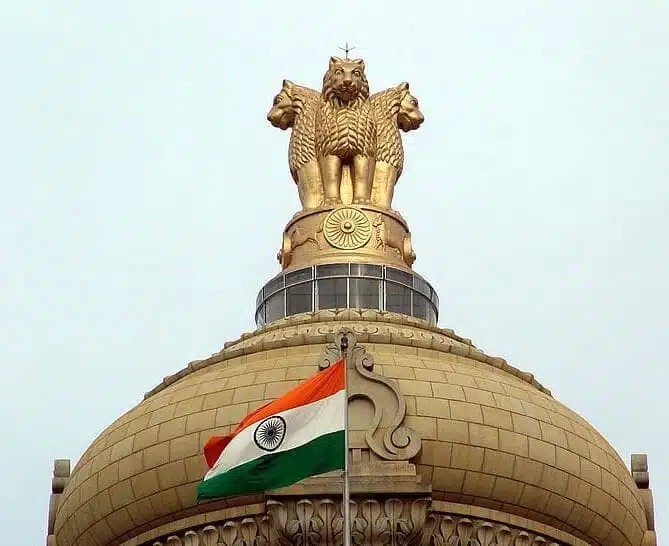Justice D.V.S.S. Somayajulu, Judge of Andhra Pradesh High Court says neither Judiciary nor Legislature is supreme, but Constitution is.
Table of Contents

Constitution of India, 1950
The Indian Constitution is the supreme law of India, which was adopted on January 26, 1950. It is a comprehensive document that outlines the framework and principles for governing the country. It is the longest-written constitution in the world and is based on the principles of democracy, secularism, socialism, and federalism.
The Constitution of India has a preamble that outlines the fundamental values and principles that the it seeks to establish. These include justice, liberty, equality, and fraternity. It also establishes the three branches of government – the legislative, executive, and judiciary – and defines their roles and responsibilities. It also guarantees fundamental rights to its citizens, including the right to equality, freedom of speech and expression, freedom of religion, and the right to life and personal liberty. The Constitution also enshrines the principles of affirmative action and reservations for historically disadvantaged communities.
The Constitution also provides for a federal system of government in India, where power is divided between the central government and the state governments. It defines the powers of the central government and the state governments and establishes a system of checks and balances to prevent any one branch of government from becoming too powerful. It has been amended several times since it was adopted, with a total of 104 amendments made as of 2021. It has been hailed as a remarkable achievement in creating a democratic and secular society in India and has served as a model for many other countries around the world.
Supremacy of the Indian Constitution
The Indian Constitution is considered superior to the judiciary and executive because it establishes the fundamental principles, rules, and structures of the government. It lays down the framework for the exercise of power and defines the rights and responsibilities of citizens. Here are a few reasons why it is considered superior to the judiciary and executive:
It is the supreme law of the land: It is the highest law in India and all other laws and policies must conform to it. The judiciary and executive are both subject to it and must operate within its framework. It establishes the separation of powers: It establishes a clear separation of powers between the legislature, executive, and judiciary. Each branch of government has specific powers and responsibilities that are defined by the it.
It protects fundamental rights: It guarantees fundamental rights to all citizens, including the right to equality, freedom of speech, and the right to life and personal liberty. The judiciary and executive are responsible for protecting these rights and must operate within its the framework.
The Constitution provides for a system of checks and balances: It provides for a system of checks and balances between the different branches of government. This ensures that no one branch of government becomes too powerful and that the government operates fairly and transparently. It can only be amended through a complex process: It can only be amended through a complex process that involves both houses of Parliament and a majority of state legislatures.
This ensures that any amendments are carefully considered and are in line with the fundamental principles of the Constitution. Overall, the Indian Constitution is considered superior to the judiciary and executive because it establishes the fundamental principles and rules for governing the country. It protects the rights of citizens, provides for a system of checks and balances, and ensures that the government operates within a framework of democratic and secular principles.
Justice D.V.S.S. Somayajulu- Constitution is supreme in India

Justice D.V.S.S. Somayajulu, Judge of Andhra Pradesh High Court stated that it is neither the judiciary nor executive which is superior, but the Constitution which is Supreme in India. As he spoke about ‘Judiciary in Retrospect and Prospect’ which was jointly organized by the Centre for Policy Studies and Visakhapatnam Public Library, he drew out the important role the Supreme Court played in giving an impetus in the past seven decades. He highlighted how important judgments and the concepts of fundamental rights and judicial interpretations in cases like the Keshavananda Bharati Case, led to giving a basic foundation to the Constitution.













